Posted2 May 2019
- In
The Art of La bohème
Opera Philadelphia's 2012 and 2019 production of La bohème was inspired by Impressionist artworks selected by director and set designer Davide Livermore, then digitized and animated by D-WOK. Many of the artworks that inspired the production live at The Barnes Foundation and Philadelphia Museum of Art; a few are from collections around the world. And while some are easily recognizable, others may be more unfamiliar. Here's a guide to the artwork of La bohème.
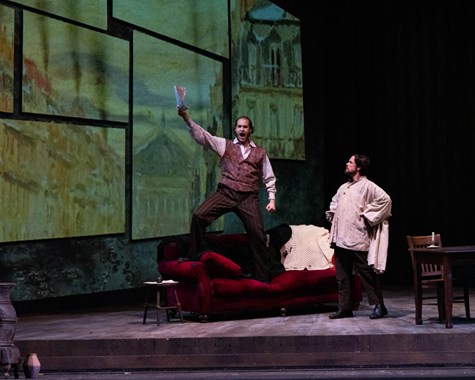
"I'm looking at Paris, seeing the skies grey with smoke from a thousand chimneys," sings Rodolfo as Act I opens. The set lights up with Pissaro’s “Avenue de l’Opéra: Morning Sunshine," which is then digitally darkened to turn into a nighttime scene, as is Pissaro's “Fair on a Sunny Afternoon, Dieppe," used to represent the Parisian Christmas Eve outside as the bohemians prepare to go to Café Momus.
Learn more about “Avenue de l’Opéra: Morning Sunshine," in the collection of the Philadelphia Museum of Art.
As Mimì sings of the flowers she makes and her love of spring, Renoir's "Anemones" appears behind her. "Anemones" is in the collection of The Barnes Foundation.
The sunflowers she holds, and then the painting that appears behind Rodolfo and Mimì as they kiss, are based on Van Gogh's "Sunflowers," in the collection of the Philadelphia Museum of Art.
Learn more about "Anemones."
Learn more about "Sunflowers."
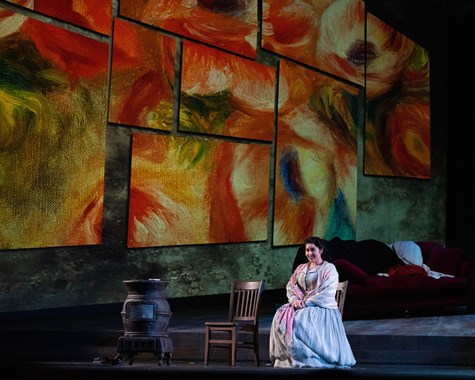
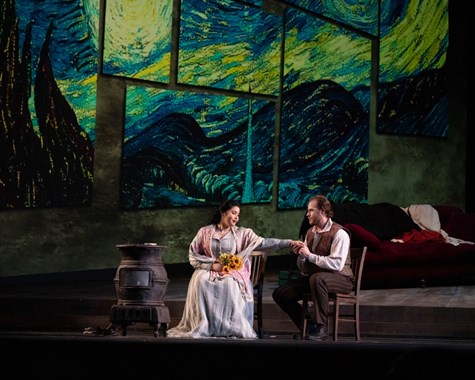
Van Gogh's "The Starry Night" has a big presence in La bohème, first as the night sky in Act I as Mimì and Rodolfo meet and fall in love, and then as the backdrop of Café Momus in Act II.
"The Starry Night" is in the collection of the Museum of Modern Art in New York City.
As Act III opens, Marcello sits at an easel painting a winter scene that is adapted from Monet's "Morning Haze," which is in the collection of the Philadelphia Museum of Art. The winter scene becomes the backdrop for most of Act III, until it melts into spring at the end of the scene as Mimì and Rodolfo decide to remain together. Spring is represented by Renoir's "Meadow," part of The Barnes Foundation collection.
Learn more about "Morning Haze."
Learn more about "Meadow."
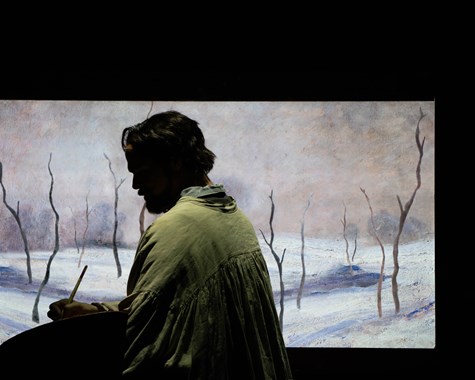
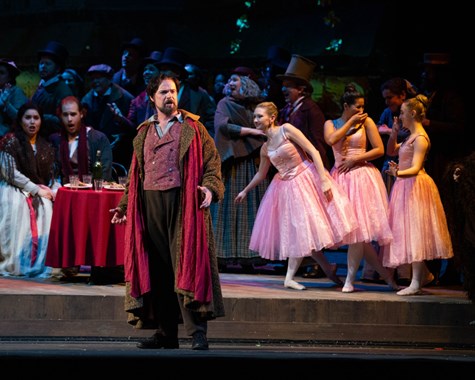
The sets aren't the only element of La bohème inspired by Impressionism. Famous artworks also inspired some of the costumes. The dancers in Act II are dressed as Degas' dancers, similar to the sculpture "Little Dancer, Age Fourteen" at the Philadelphia Museum of Art.
Mimì's blue dress was modeled after Renoir's "Girl in Grey-Blue" and the bonnet Rodolfo buys her is designed after Renoir's "Girl with Pink Bonnet." Both paintings are in the collection of The Barnes Foundation.
"Girl with Pink Bonnet" also appears in Act IV as Rodolfo and Marcello sing of their loves.
In Act IV, the painting that appears behind Mimì as she lays dying is Jean Béraud's "After the Misdeed." It inspired not only the pose of Mimì, but the dress she wears, and the red couch in the bohemians' apartment. As Mimì dies, the woman first disappears from the red couch, then the whole canvas cracks.
Learn more about "After the Misdeed," at the National Gallery, London.
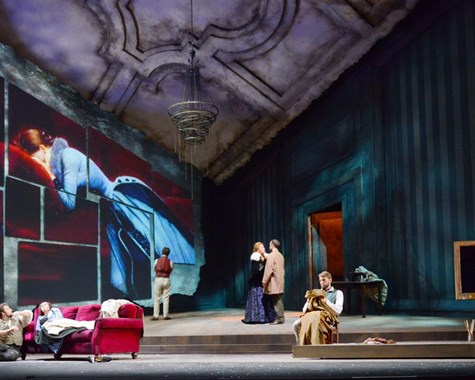
Leave your comment below.

 Facebook
Facebook Twitter
Twitter More
More